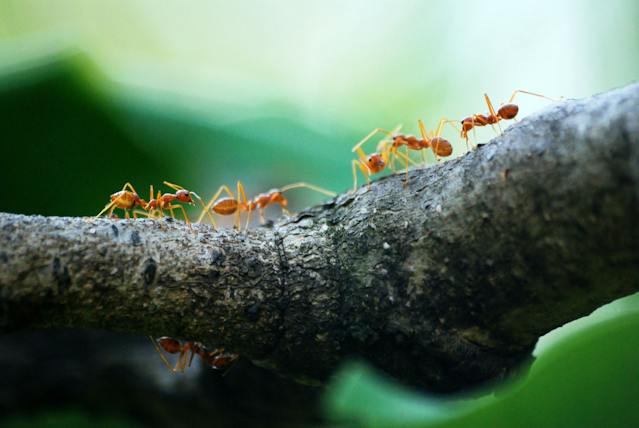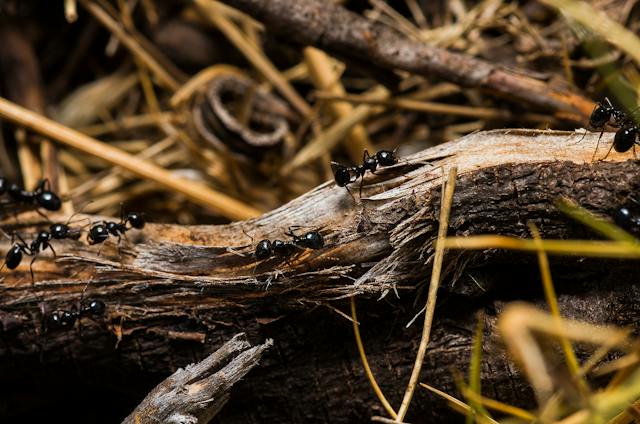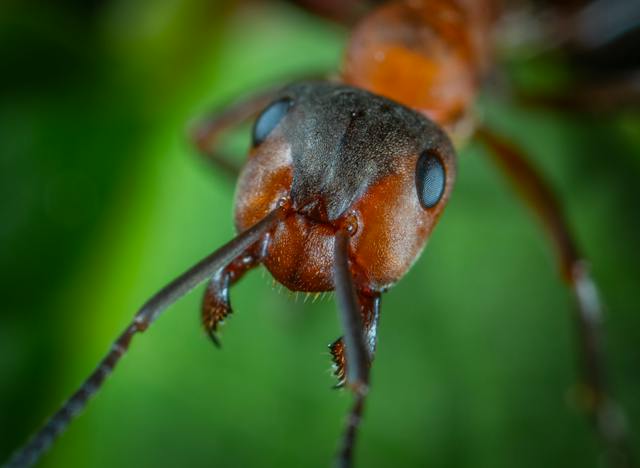Beyond their small size and seemingly innocuous demeanor, ants can harbor a potential threat that often goes unnoticed. The pressing question emerges: “Are ants dangerous?”
These seemingly insignificant creatures can transform into genuine menaces, causing disruptions in homes and structures and even posing unforeseen risks to human health. Keep reading to learn about the real problems ants can cause!
Ants & Their Reputation
Ants have earned a less-than-stellar reputation for various reasons, with one primary concern being their uncanny ability to persistently invade our living spaces. These tiny intruders effortlessly find their way into homes, buildings, and outdoor areas, establishing colonies that pose a considerable challenge to deter and eliminate.
Compounding their less-than-ideal image is the ants’ persistent tendency to infiltrate our food sources. Whether it’s the kitchen pantry or an outdoor picnic, ants display an impressive knack for locating and taking over our meals, creating annoyance and hygiene concerns.
Certain ant species are armed with painful stings or bites, further contributing to their unfavorable reputation. These defensive mechanisms add an extra layer of discomfort and inconvenience when dealing with these seemingly uninvited guests.
Are Ants Dangerous?
Ants, often considered harmless, can bring about risks depending on their species and the situation. Take carpenter ants, for instance; unlike termites that munch on wood, carpenter ants dig into the wood to establish colonies.
As time passes, this behavior can compromise the structural integrity of buildings, potentially resulting in damage that requires expensive repairs. The worry here isn’t about immediate harm to us but the gradual impact on our properties.

But that’s not the end – ants can disrupt ecosystems and agriculture. Invasive ants can outcompete native species, affecting biodiversity. Their presence can upset the delicate balance of plant-insect interactions, potentially influencing the health of crops.
The Hidden Dangers: Ants That Pose Risks
While numerous ant species are generally harmless, certain ones can become problematic, particularly when infiltrating homes and structures. Let’s explore specific types of ants deemed more troublesome and analyze their potential risks.
Fire Ants: Notorious for Painful Stings
Fire ants, scientifically labeled as Solenopsis invicta, are infamous for their aggressive demeanor and stinging bites. Originally hailing from South America, these ants have expanded their territories to various regions worldwide, raising concerns for humans and animals.
Recognizable by their substantial mounds, fire ant colonies pose a threat when disturbed, leading to swarms of ants aggressively defending their nests. The venom injected through their stings can trigger severe allergic reactions in some individuals.
Carpenter Ants: Silent Damagers of Structures
Carpenter ants carve out their nests by excavating wood. This skill is prominent in wooded areas and can become a concern when they infiltrate homes, especially in regions grappling with moisture problems.
These pests threaten buildings as they fashion galleries within wood, leaving you with damage and expensive repairs. It’s crucial to promptly recognize and address carpenter ant infestations to avert potential long-term structural problems.
Red Imported Fire Ants: A Global Pest
The red imported fire ants (Solenopsis invicta), a subspecies of fire ants, have garnered a global reputation as pests. Renowned for their aggressiveness and resilience, these ants are infamous for their painful stings, posing health risks. Beyond their impact on human well-being, red imported fire ants significantly affect agriculture and wildlife.
These ants construct sizable mounds in open areas, disrupting the local ecosystems and reducing the native ant populations. Effectively managing red imported fire ant infestations requires robust pest control measures to mitigate their broader impact on natural environments and agricultural landscapes.
Pharaoh Ants: Indoor Pests
Pharaoh ants, scientifically labeled Monomorium pharaonis, are frequently encountered as indoor pests. Thriving in warm and humid conditions, these tiny ants are commonly found in buildings, particularly areas with accessible food sources.
Although pharaoh ants don’t present a direct health threat through stings, they can transmit harmful bacteria, leading to food and surface contamination. Controlling pharaoh ant infestations in homes, hospitals, and food establishments is essential to prevent the spread of diseases.
Preventive Measures: Keeping Ants at Bay
Now that we’ve pinpointed ants that may pose a challenge– let’s delve into preventive measures to keep them from becoming unwelcome visitors to your home or property.

1. Seal Entry Points
Ants can enter buildings through tiny cracks and gaps. Regularly inspect and seal entry points, including gaps around windows and doors, to prevent ants from infiltrating your home.
2. Remove Food Sources
Ants are attracted to food crumbs and spills. Keep your living spaces clean, especially in the kitchen, and store food in airtight containers to eliminate potential food sources.
3. Manage Moisture Issues
Carpenter ants are drawn to damp wood. Address moisture issues such as leaks and water accumulation promptly to reduce the risk of carpenter ant infestations.
4. Professional Pest Control
If ant infestations persist or you’re dealing with aggressive species like fire ants, seeking professional pest control services is crucial. Pest control experts can assess the situation, implement effective treatments, and provide long-term solutions.
When you have an ant infestation in or around your home, give the experts here at United States Pest Service a call! We’re well-versed in tackling any of the common ant species in Orange and Rockland counties!

